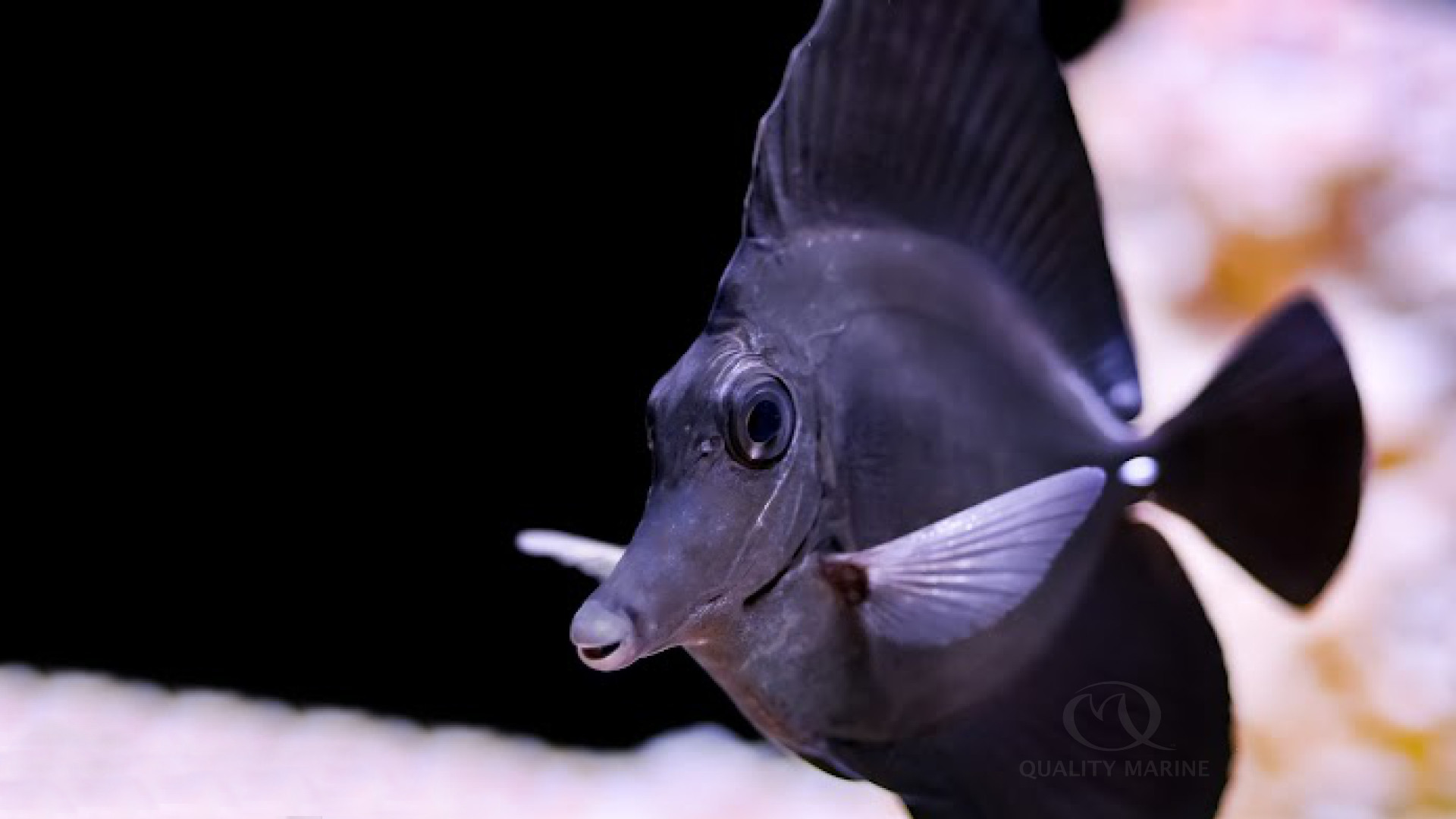The Pinocchio Of Tangs

The Longnose Tang, sometimes called the Black Tang or Black Longnose Tang, (Zebrasoma rostratum) is a member of the family Acanthuridae, which we know better as “tangs” or “surgeonfishes.” Surgeonfishes gain this title from the scalpel like spine found on the caudal peduncle (part of the fish that narrows as the body meets the tail). These are gorgeous fish, capable of getting to around nine inches long, and can show some light blue highlights but are mostly black, or sometimes very dark brown or gray, except for the spine on the caudal peduncle (what a fun word!) which is white!
Black Long Nose Tangs are found in the Eastern Pacific in the Line, Marquesas, Society, Tuamoto and Pitcairn Island groups. They can live relatively shallow, but these fish are known to be found deeper than many tang species, sometimes reaching depths of close to 200 feet!
Black Long Nose Tangs are an active fish that is used to spending all day swimming and grazing on the seaward reefs. So, the aquarium should be large and should have somewhat open rockwork to allow the fish plenty of room to swim. Tank mates could really be just about anything, but pairing a Black Long Nose Tang with other tangs from the genus Zebrasoma especially or with similar body types is likely to result in intensified territoriality.
Excessive filtration is a good idea as these fish are messy eaters and thus create a lot of waste. Powerful flow to replicate the seaward reef conditions and give the Black Long Nose Tang some exercise will help keep your tangs stress levels low and health levels high.
Black Long Nose Tangs feed on the micro and macro algae that grows on the reef and all the small creatures that live on or in it as well. The diet should consist of quality frozen foods, flakes and pellets mixed with regular access to fresh or freeze-dried algae. A quality, nutritious food like Nutramar's “Complete” or “Algae Color Boost” shots is an incredibly important aspect of keeping these (and any zebrasoma healthy). The primary problem people have with Zebrasoma tangs is nutrition. These tangs don't live on algae alone in the wild and should never be fed just algae in the home aquarium! This being said, algae are also an important part of their diet. Those of you who can grow different types of macro or micro algae in a scrubber or refugium should offer it to your tangs, and it should be accepted with gusto!
Breeding Long Nose Tangs hasn’t happened yet in captivity, but with breakthroughs in yellow and purple tangs in the same genus (Zebrasoma) it is only a matter of time. These fish have a limited range and come from deep waters in remote islands, so they are a prime candidate for a captive breeding program. The basis should exist with the aforementioned species being produced commercially now.
The Black Long Nose Tang is certainly one of the mostly highly sought after (holy grail) fish in the saltwater aquarium community and once you see one you will realize why. Their unique shape (even among Zebrasoma species tangs), stark and unique coloration, and constant movement will be a showstopper in almost any marine tank! Contact your local fish store today and ask them to source you a sustainably collected Black Long Nose Tang today from Quality Marine!